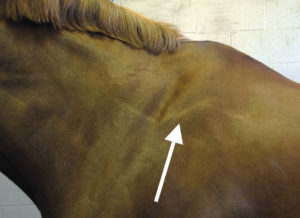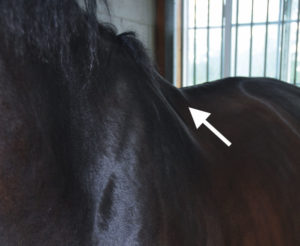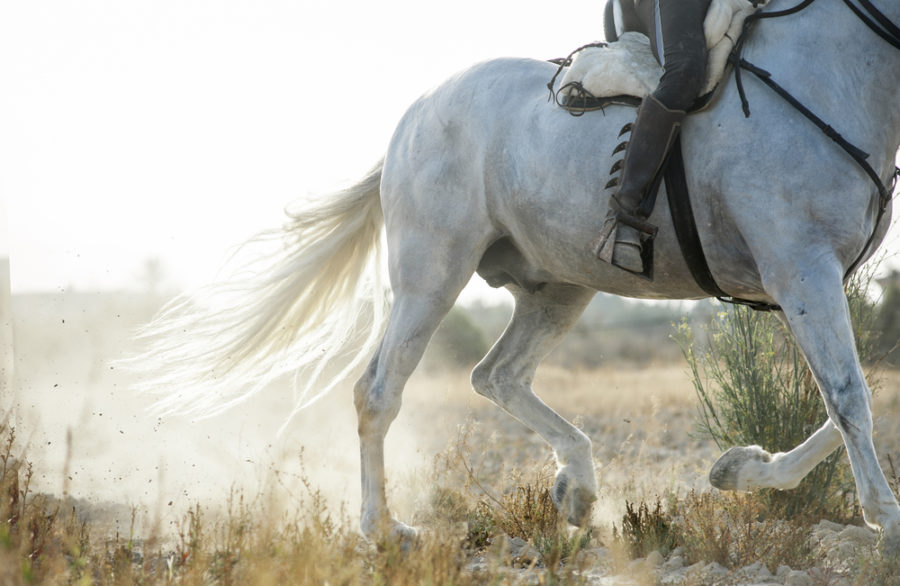What exactly is muscle atrophy in horses, and how does it differ from good muscle definition?
Muscle atrophy occurs in a horse when an unbalanced saddle puts too much pressure on a muscle, and he tenses to avoid the pressure. He goes into “defensive mode” by contracting the muscle in the area, and alters his gaits. Because circulation is impacted by the pressure (reducing nutrients and oxygen to the affected area), the muscle will “undevelop” or atrophy. The first sign of atrophy caused by constant pressure is damaged hair follicles, resulting in hair loss and/or white hair. This can be reversed only when the cause is addressed, allowing the muscle to regrow; however, the white hairs will remain. Muscle memory will help in the faster rebuilding of properly trained atrophied muscles.

Muscle definition can actually be a negative form of atrophy. Positive muscle definition is the development of muscular conformation during proper training; negative muscle definition happens when defensive contraction occurs to counteract a poorly fitting saddle. This negative muscle definition is “hypertonic” – the contraction phase of the muscle(s) is unnaturally long and abnormally tense, resulting in tight, cramped muscle development – resembling atrophy.
Physical signs of saddle fit trauma are more apparent than psychological signs. Head tossing, bucking, stumbling, tongue issues, rearing and resistance all indicate pain. White hair, dry spots and muscle atrophy are visual signs.

Each of these issues originates from a saddle that doesn’t fit the horse properly – the gullet channel may be too narrow, the saddle pinches at the withers and/or the tree width and angle are incorrect. Spinal issues, nerve damage or cartilage injuries also result from poorly fitting saddles. The horse may be “girthy”, anticipating pain.
If your horse seems to be narrowing behind the shoulder area, it is not necessarily due to muscle atrophy. These muscles lengthen during use (here’s an analogy – flex your arm and watch the bicep contract and lengthen). As your horse’s back supples, the longissimus dorsi lengthens (often mistaken for atrophy).

Understanding muscle definition and biomechanics explains why certain parts of the body become bulky, while others become more defined and slimmer. After working out for a year, a bodybuilder probably needs a new jacket for his larger upper body, and new pants for his smaller waist – not because of atrophy but rather due to pressure from his belt.
Horses do not consciously behave badly, and really want nothing more than to please their leaders. Horses value their bonds with their riders; and as a rider, you intuitively know when something is wrong. You see it in your horse’s eyes, his ears, his tongue, and you feel it when you ride. When the horse expresses himself to extremes, you know he is suffering. Don’t exacerbate the problem. Instead, address the root cause – your saddle may need to be adjusted – but also consider the possibility that there could be other issues contributing to his back problems. Involve your equine professionals to help determine what’s going on.







